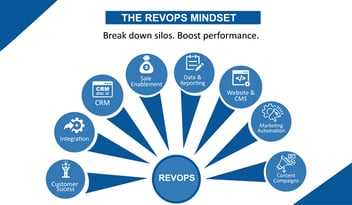Unifying Teams for Optimal Performance and ROI
Introduction:
In the pursuit of business success, aligning sales and marketing efforts is crucial. When these two key departments work in harmony, the result is a more streamlined, efficient, and effective approach to customer acquisition and retention. This blog explores the best practices and tools necessary for achieving alignment between sales and marketing teams, focusing on strategies that enhance communication, coordination, and shared goals, ultimately leading to improved business outcomes.
Understanding the Importance of Alignment:
• Sales and Marketing Synergy:
Introduce the concept of sales and marketing alignment and its importance in today's competitive business environment.
• Impact on Business Growth:
Discuss how alignment can lead to increased efficiency, higher conversion rates, and stronger customer relationships.
Best Practices for Achieving Alignment:
1. Shared Goals and Metrics:
Explore the importance of establishing shared goals and metrics that both sales and marketing teams can work towards.
2. Regular Communication and Collaboration:
Highlight the need for regular communication and collaboration between teams to ensure consistent messaging and strategies.
3. Customer Journey Mapping:
Discuss the role of customer journey mapping in aligning sales and marketing efforts, ensuring a seamless customer experience.
Effective Tools for Alignment:
• CRM Platforms:
Dive into how CRM platforms like Salesforce and HubSpot can facilitate alignment by providing shared data and insights.
• Marketing Automation Tools:
Discuss the role of marketing automation tools in streamlining lead generation and nurturing processes.
• Collaboration Software:
Highlight the use of collaboration software to enhance communication and project management between teams.
Overcoming Common Alignment Challenges:
• Address challenges such as departmental silos, differing KPIs, and miscommunication, providing strategies to overcome these issues.
Case Studies:
• Share success stories of businesses that have effectively aligned their sales and marketing teams, illustrating the tangible benefits of this approach.
Conclusion:
Aligning sales and marketing is not a one-time effort but an ongoing process that requires commitment, communication, and the right tools. By adopting best practices and leveraging effective tools, businesses can ensure that their sales and marketing teams are working together towards common goals, leading to improved ROI and overall business growth.
About CETDIGIT:
At CETDIGIT, we understand the critical importance of aligning sales and marketing efforts. Our expertise in CRM and digital marketing solutions positions us uniquely to help businesses achieve this alignment. We provide the tools and strategies necessary to bridge the gap between sales and marketing, ensuring that our clients can fully capitalize on their combined strengths.
Achieving Sales and Marketing Alignment: Best Practices and Tools

Popular Post
- Nostalgia Marketing’s Power with Millennials & Gen Z
- SaaS Founder's Bible: The Rise, Fall, and Future of SaaS (2020-2025)- Part 1: Navigating Market Shifts
- Sales and Sales Development in 2024: Why AI is a Must-Have for Growth
- What is Salesforce CRM?
- CETDIGIT's Innovative Approach to Salesforce & HubSpot CRM Implementation
Subscribe
Similar Blogs

The Role of Data in Revenue Operations
Everybody relies on data these days. In the digital world, the business owner who leverages data...
READ MORE
Set Up a Revenue Operations Funnel in 4 Steps
Fact: every business needs revenue operations. A well-structured RevOps framework can be the...
READ MORE
RevOps: The Key to Driving Revenue Growth
RevOps is a critical strategy for businesses looking to drive revenue growth in today's fast-paced...
READ MORE
Leave a Comment